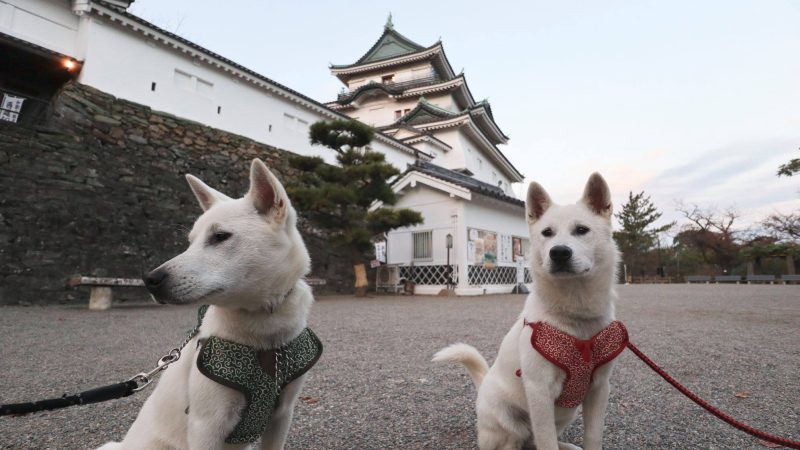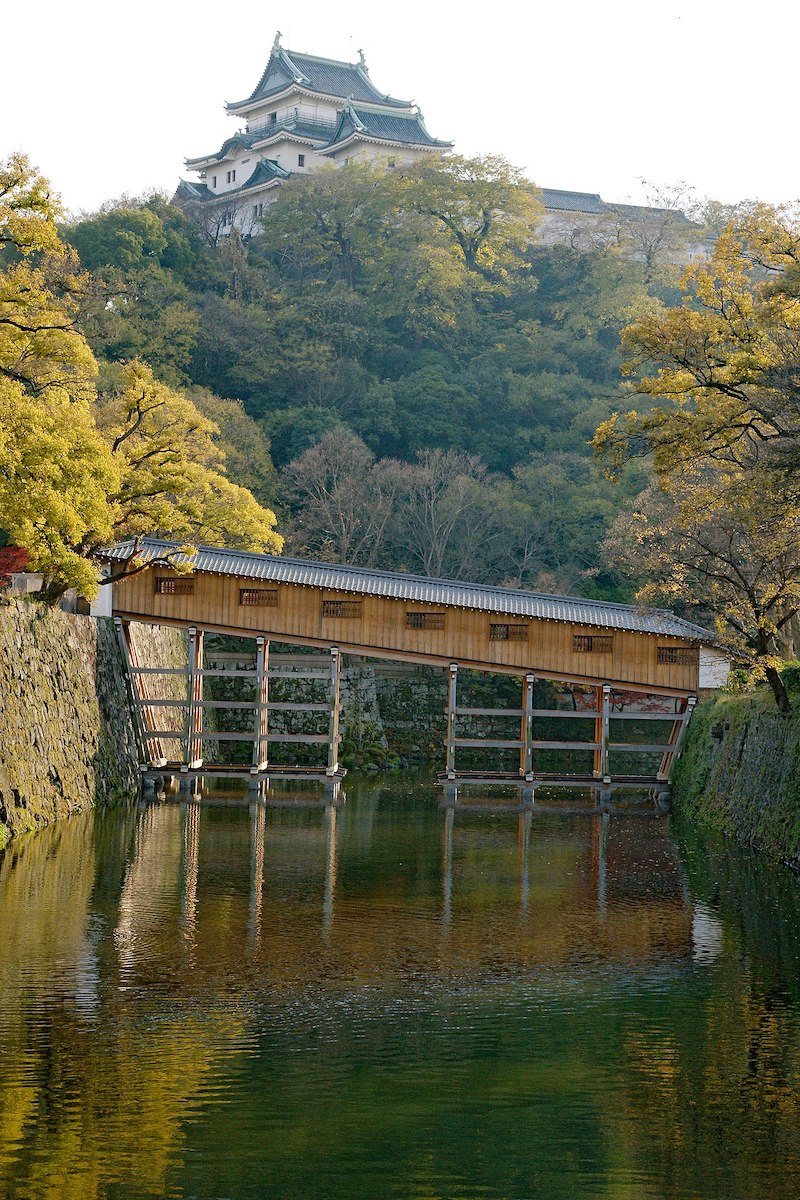
Nothing says power like a good old fashioned castle to remind you of who’s in charge.
Though he was born a peasant in 1536, Toyotomi Hideyoshi rose to the rank of samurai, and today is recognized today as one of the three unifiers of premodern Japan. He did this by establishing a government of national unification through alliances, and dividing society into distinct classes of warriors, farmers, artisans, and tradesmen. He promoted trade, abolished road checkpoints, and influenced cultural and ceremonial affairs in Japan. Believing that faiths outside of Shintoism, Buddhism, and Confucianism would undermine the integrity of Japanese society, Hideyoshi’s strict religious policies included the persecution, torture and execution of non-believers.
In the late 16th century, Hideyoshi ordered his brother, Hidenaga, to build a castle after he had annexed the land of Kishu (formerly known as Wakayama prefecture). The castle establish Wakayama as the headquarters of the ruling family while strengthening Hideyoshi’s control over the region by serving as a strategic stronghold. Seen from the sea, the castle struck some as having the appearance of a pouncing animal, and thus was nicknamed the “crouching tiger castle” during construction.

Wakayama Castle by 663highland shared under the GNU Free Documentation License
For over 400 years, Wakayama Castle was a central figure in people’s lives, with samurai and townspeople living in plots organized around the castle. Even after feudal lords had long gone, the castle served as a symbol of the land.
It wasn’t to survive WWII. The original castle was destroyed by bombings but later rebuilt, and visitors to the landmark today will see the main keep that was rebuilt in 1958. Wakayama Castle was recognized as a National Historic Site in 1931, its stunning Nishi-no-Maru Garden designated as a National Place of Scenic Beauty in 1987. Another attraction is a small zoo located within the Wakayama Castle compound. Built in 1915, the zoo has mostly deer, monkeys, and waterfowl breeding centers, but of particular interest to us are its zoo ambassadors. They’re real dogs.
Literally.
Two sisters, Satsuki and Ayame, are Kishu Ken who were welcomed as new members of the Wakayama Park zoo in August, 2018. Their “jobs”are to welcome visitors to Wakayama Park zoo and be on hand for “photo ops.” Thanks to one of our readers, Alexis Amerosa, we were made aware of the dogs and are able to share below the photos that Alexis took when she visited the grounds, herself:

Satsuki and Ayame’s presence at the zoo is wholly fitting. The Kishu Ken originated from the Kii Peninsula which includes modern-day Wakayama, the breed history dating back at least 3,000 years. According to legend, the breed descended from wolves gifted to a man who helped an injured wolf, and today, the Kishu Ken is a treasured breed deeply rooted in Japanese history.
Our post title is the result of a “lost in translation” moment. We learned from a Japanese language website that there are dog ambassadors at Wakayama Castle known as the “Entertaining Ninjas.” They hide themselves with a cloth close to the wall and assist tourists by helping push strollers or luggage up the castle. Sometimes, they even provide performances, making the experience at Wakayama Castle creative and unique compared to common staff interactions.
Dogs that cover themselves in cloth? Okay, why not? In short order, we came to realize that the “Entertaining Ninjas” are humans pretending to be ninjas, though given how intelligent the Kishu Ken is, we weren’t entirely thrown off by a dog that could help push a stroller. Just saying.
We decided to keep the post title.
Top photo “borrowed” from the Facebook page of Wakayama Castle Park Zoo.
